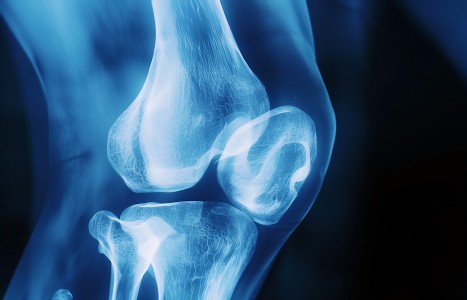This article focuses on nine severe injuries that are generally not diagnosable until the third to fourth week following the date of injury, including how to diagnose these severe injuries. The discovery of any of these injuries early can make a significant difference in the case outcome.
| Digital ExclusiveWhat Killed Health Reform?
A year after President Clinton and his wife Hillary unveiled their massive and complex plan to overhaul the nation's health care, it is dead and gone. Why? Was it Rush Limbaugh, the medics, or the drug and insurance companies that brought an end to this grand plan and all the compromise versions it spawned? Or was it something else?
Initially the public supported the Clinton plan by a margin of more than 60 percent. Nonstop campaigning by Hillary Clinton, Democratic control of Congress, and overwhelming support from the national media all seemed to augur well for passage. Most pundits thought that the president would have little trouble getting a reasonable measure passed by Congress. Of course, what might seem reasonable inside the Washington Beltway may not seem reasonable to most Americans. Although Mr. Clinton promised a simple plan to set things straight, he instead delivered a mind-numbing, authoritarian, and hopelessly complicated 1,342 page document, crafted by Ira Magaziner working under the direction of the president's wife. If enacted, the plan, as it was written, would place another 14 percent of our nation's economy under the control of federal bureaucrats.
What President Clinton was attempting to do was resurrect a method of social reform that is no longer in vogue, due largely to the transformation in thought that has occurred during the first 20 or so years of the "information revolution." The old top-down social engineering of times gone by simply won't work today. The Clinton plan was crafted by central planners and, as such, it is an anachronism, a throwback to the machine age.
You may ask what the information revolution has to do with health care reform. The information revolution, according to James Dale Davidson and Lord Reese-Mogg in their best selling book, The Great Reckoning, "is the third revolution of human life," behind the agricultural and industrial revolutions. Because of the enormously increased access to knowledge that individuals and small groups now have, large and complex institutions will no longer be as important as they once were. In fact, Davidson and Reese-Mogg believe that big government as well as other large institutions will eventually be destabilized by the advent of the micro chip. A recent article in The Wall Street Journal by Alvin and Heidi Toffler states that the "third wave" (the information revolution) will also destabilize political parties and it is only a matter of time before this becomes evident.
Just think of what sophisticated communications technology and on-line networks are doing to society. They have transformed many offices and homes into huge resource libraries. The Internet we've all heard so much about contains enormous amounts of information and already it's being used by millions of people, mostly for E-mail and file transfers. These two functions alone are revolutionizing business and changing the way Americans think about their world. In his article announcing the creation of the Chiropractic Network Connection in the fall issue of Success Express, Charles Jutkiewicz says of on-line networks, "The information gathering and research possibilities are almost unfathomable. You cannot imagine how much information is available on-line."
The Clinton plan, as drafted by social engineers with machine age or "second wave" mentality, was far too complex and cumbersome for Americans living in the 1990s. It reflected typical machine age concepts of centralized decision making via monopoly power and a big dose of government regulation. What's more, the whole enterprise was put together in secret -- the very antithesis of the information revolution. The plan may have been enacted 50 years ago, or during the Johnson administration, but not today. The economy of the 1990s is far different from that of the Johnson years. Back then, Americans expected more and more concentration of power, ever larger bureaucracies, and as Michael Rothschild has said, "massive, centralized hierarchies -- from IBM and Sears to Washington and Moscow. Advanced technology meant bigger main frames and more power for the bureaucracies that controlled them." We all know, however, that things didn't turn out that way. Sears and IBM have been largely dethroned and the Soviet Union is no more. Moreover, all the polls show increasing distrust of Washington and its army of centralized planners. America is restructuring itself in a very profound way. Like the passing of mainframe ideology at IBM, the architects of the Clinton plan are hopelessly out of step with today's world.
The information revolution, largely based on computer technology, and the nonlinear science that computers make possible, has inspired a new world view. As Davidson and Reese-Mogg have said, "High-speed computers are, in essence, the telescopes that enable us to look beyond the Newtonian universe. We now know that complex systems do not necessarily operate with mechanical, regular, and continuous relationships. Cause and effect can interact in far more complicated ways. And this has consequences. It should alert us to look with new respect at the interconnectedness of events. Apparently trivial causes operating at a great remove from where their effects are finally felt can produce sweeping changes."
This kind of thinking has heightened our awareness of the interconnectedness of all life on earth and is partly responsible for the birth of the ecological movement. It has also increased our awareness and appreciation of holism in health care. The fact is that the human body is not a machine. It is, instead, a wonderfully complex biological system in which the mind and body are inseparable. The whole is far more than the sum of its parts, and events taking place at the level of, for instance, the gut, may ultimately be felt in the musculoskeletal system or some other unlikely part of the body.
A good example of the latter was given by Michael A. Schmidt, DC, CCN, CNS, author of Beyond Antibiotics. He points to changes impermeability of the gut due to overuse of antibiotics, which destroy the microflora and allow for the passage of intestinal contents into the blood stream. This can lead to chronic conditions such as rheumatic diseases and rheumatoid arthritis. Whole bacteria can sometimes cross the gut wall and affect immune response and damage the tissues of the joints.
Dr. Schmidt and other holistic doctors advocate looking at the body as a balanced and dynamic biological system. This is most emphatically not symptom relief medicine as is commonly practiced by the medical industrial complex. Just look at what they advertise on TV. Most ads are for the common cold for which there is no cure. Nevertheless, they offer you a whole array of drugs like Contac and Dristan to suppress symptoms. Sometimes they help and sometimes they don't. However, according to Gerald Celente, author of Trend Tracking, Americans are fed up with symptom relief medicine and are increasingly turning to holistic, complimentary forms of treatment. Symptom relief medicine as we know it is what is behind the overuse of antibiotics and other drugs, which is part of the reason for the alarmingly high incidence of iatrogenic disease. Celente and other trend experts have documented the trend toward holism and Celente, in particular, has predicted that medical practitioners, "who take a holistic approach will be in demand." A much greater emphasis will be placed on drugless approaches to health and there will be more demand for nutritional and herbal therapies.
Ignoring complementary, holistic approaches to health care was another serious short coming of the Clinton plan. David Eisenberg, MD, and his colleagues writing in the New England Journal of Medicine revealed that some 34 percent of adult Americans used alternative/complimentary therapies in a single year. And yet, the Clinton plan paid scant attention to this market, even though the public is clamoring for alternatives to drugs and invasive procedures.
From the very beginning chiropractic has emphasized that the human body is self-healing and self-restoring. In fact, it has been said that D.D. Palmer anticipated the physiological principle of homeostasis by about 40 years. Orthopractors and others who see chiropractic as only a musculoskeletal specialty are in reality reductionist, "second wave" thinkers who are out of step with the great changes taking place today. Chiropractic's view of health and healing fits in very well with the new consciousness which has blossomed forth in conjunction with the information revolution. This writer believes that the future is bright for chiropractic as long as it remembers its holistic roots and adheres to holistic principles.
FCER is currently funding research dealing with chiropractic treatment of a broad range of maladies. Chiropractic was not conceived as a back pain specialty. Instead it was, and continues to be, a holistic alternative to allopathic medicine, especially as it is currently practiced by the medical industrial complex.
For more information about membership in the Foundation contact: FCER, 1701 Clarendon Blvd., Arlington, VA 22209, (800) 637-6244 or (703) 276)7445.
Stephen Seater, CAE


